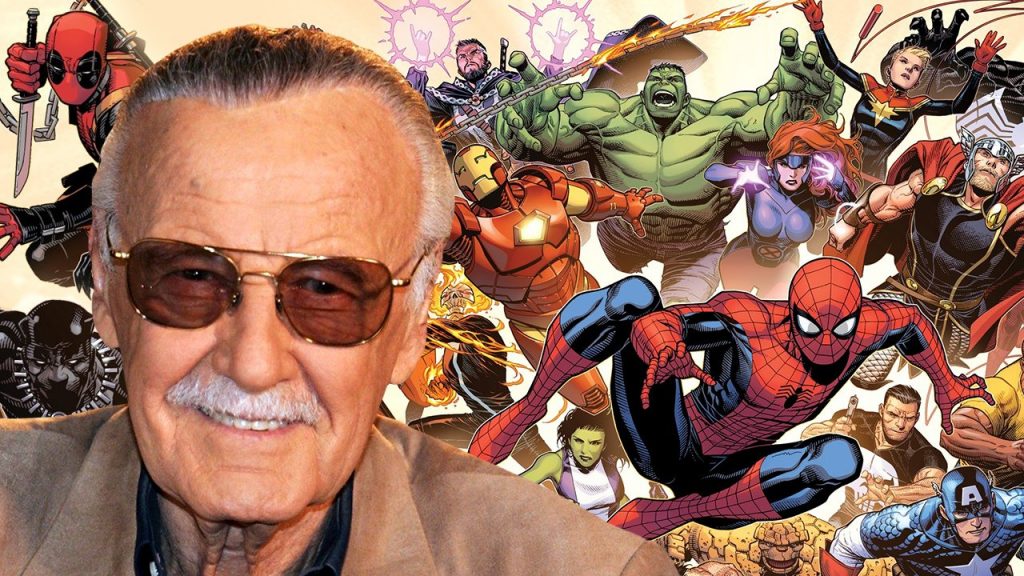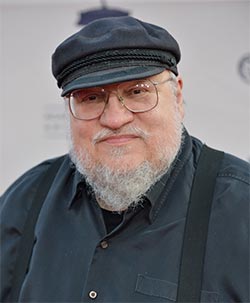
Unless you have been hiding in a cave somewhere… or down with the Mole Man in the bowels of the Earth… by now you will have read that Stan Lee has died, at the age of 95.
A good age, that. Stan Lee lived a long life, and leaves a grand and glorious legacy behind him. He has been part of my world for so long that it seems impossible that he is gone.
Not that I can claim to have been a friend. I never had that honor. Oh, yes, I met Stan a dozen times or so, at various San Diego Comic-Cons over the years. Every time I did, it was like meeting him for the first time; he never remembered our previous meetings, and I don’t think he had any idea who I was. It made no matter. He was always genial and generous to me, as he was to all the fanboys who surrounded him at those cons. And when I was in Stan’s presence, that’s just what I was: a fanboy, slightly tongue-tied and more than a little in awe.
I owe so much to Stan Lee. He was, in a sense, my first publisher, my first editor. “Dear Stan and Jack.” Those were the first words of mine ever to see print. In the letter column of FANTASTIC FOUR #20, as it happens. My first published loc, a commentary on FF#17, compared Stan to… ah… Shakespeare. A little overblown, you say? Well, okay. I was thirteen…
And yet, and yet… the comparison, when you think about it, is not entirely without merit. There were plays before Shakespeare, but the Bard’s work revolutionized the theatre, left it profoundly different from what it had been before. And Stan Lee did the same for comic books. I had been reading comics all through my childhood, but by the late 50s I had started to drift away from them. I was buying fewer and fewer “funny books” (as we called them back then), and more SF and fantasy paperbacks. The DC comics that dominated the racks had become so formulaic and tired, they were no longer holding my interest as they had when I was younger. I was “outgrowing” comics.
And then Stan Lee came along, and pulled me back in. The first issue of FANTASTIC FOUR that I chanced on (#4, it was, the one where the FF met Prince Namor) caught my interest as nothing had for years. A short while later, along came Spider-Man. And then the rest, one by one, in an astonishingly short period of time. The Hulk. Thor. Iron Man. Ant-Man (and the Wonderful Wasp). The X-Men. The Avengers. Wonder Man (who died in the same issue he was introduced). Black Panther. The Inhumans. Galactus and the Silver Surfer. And the villains… Dr. Doom, Dr. Octopus, the Vulture, the Sandman, Mysterio, Loki… and on and on. (We will not talk about Paste-Pot Pete. This is a tribute).
These characters had personalities. Quirks, flaws, tempers. The heroes were not all good, the villains were not all bad. The stories had twists and turns, I could not tell where they were going. Sometimes good guys fought other good guys. The characters grew and changed… over at DC, Superman and Lois Lane had been locked into the same relationship for decades, but Peter Parker went through girlfriends like a real teenager, he graduated high school and went to college, people could and did die.
You had to be there to understand how revolutionary all this was. Comics as we know them today would not exist except for Stan Lee. They might not exist at all, if truth be told.
No, of course, he did not do it all alone. The genius of Marvel’s artists, especially Jack Kirby and Steve Ditko, should never be minimized. They were a huge part of Marvel as well. But Lee was at the center of it all.
That letter in FF#20 was only the first of many I sent to Stan and Jack, and Stan and Steve, and Stan and… whoever the artist was on the book I was writing to. A number were published, with my full address attached. Other comics fans around the country saw the letters, and began sending me fanzines and letters of their own. My friendship with Howard Waldrop began thanks to those letters… him in Texas, me in Jersey. And after reading some of those early ditto’d fanzines, I began to write for them as well. My first published stories. Heroes of my own creation. Manta Ray. Garizan the Mechanical Warrior. The White Raider (who, like Wonder Man, died in his first story). And, then, a little later, heroes created for STAR-STUDDED COMICS by my friends from the Texas Trio, Powerman and Dr. Weird. I could not draw so I wrote “text stories,” superhero stories in prose. Which people liked. Which encouraged me to keep writing. And as I wrote, I did my best to write like Stan Lee.
These days, in interviews, I am often asked which writers influenced me most when I started out. There were a lot of them. For SF there were Heinlein and Andre Norton and Eric Frank Russell, for fantasy Robert E. Howard and JRRT and Fritz Leiber, for horror the inimitable H.P Lovecraft. Later on, when I was older, there was Jack Vance and Ursula K. Le Guin and Roger Zelazny and Samuel R. Delany and Alfred Bester, and later still William Goldman and F. Scott Fitzgerald.
But the greatest influences are the earliest influences, I think, and at the beginning there was only Stan Lee.
Comics have had a lot of great writers in the half century since the Marvel Age began. Neil Gaiman, Len Wein, Alan Moore, and more and more and more… the list goes on and on. But if not for Stan Lee and the worlds and characters and style he created, their own careers and accomplishments would have been very different, if not impossible.
Let me close with one last letter of comment.
Dear Stan,
You did good work. As long as people still read comic books and believe in heroes, your characters will be remembered. Thanks so much. Make Mine Marvel.
George R. Martin
35 East First Street
Bayonne, New Jersey

Current Mood:  melancholy
melancholy




